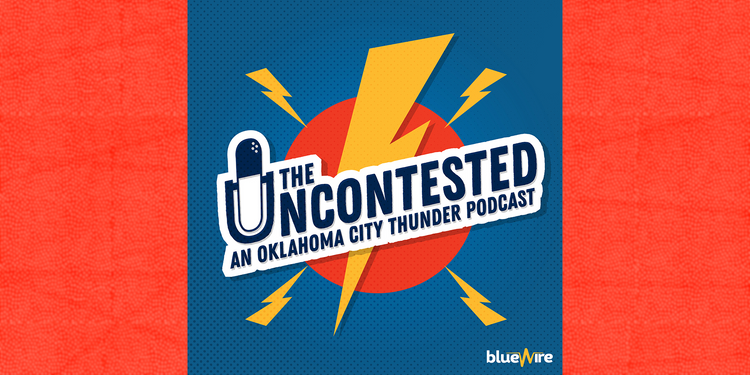The moving and shaking that was: A Thunder transactional retrospective, 2013/14


NBAE/Getty
Reminder: I’ve avoided some of the contractual weeds to simplify the real changes to the Thunder’s extended roster, so you won’t find any deep analysis on things like Georgios Printezis’s draft DeAndre Liggins’ enthralling Summer League stint.
2013/14 Moves
Incoming players:
Picked: Steven Adams (12
thoverall), Andre Roberson (26
th), Alex Abrines (32
nd), Grant Jerrett (40
th)
Traded for: Memphis’s 2017 second round pick (lightly protected)
Signed: Caron Butler
Outgoing Players:
Traded: Ryan Gomes
Walked: Kevin Martin, Ronnie Brewer, DeAndre Liggins
Waived: Daniel Orton
In Hindsight:
This was, by most appearances, a model year for the Thunder, starting with the draft. Despite reported failed attempts to move up for Victor Oladipo at the second pick, Oklahoma City ended up with a decidedly not flashy haul on the heels of Harden’s ascension in Houston and their Westbrook-less playoff disappointment. Most analysis at the time graded the Thunder somewhere between “meh” and “decent” for taking a huge slab of raw athleticism in Steven Adams at number 12 and moving up from Archie Goodwin at 29 to swipe a lanky project in Andre Roberson at 26. The Roberson pick was less popular, and would have been more widely panned had his eventual conversion to shooting guard from power forward been on everyone’s radar.
Instead of paying a steep price to try and recover the perimeter they had lost with the Harden trade, the Thunder were steadfast, or stubborn, in privileging long-term flexibility and depth, some of GM Sam Presti’s favorite words.
In retrospect, the Thunder come out remarkably well in mining one of the worst overall draft pools in recent history. Adams and Roberson have become two-fifths of the most dominant starting lineup just two seasons later, acting as the physically imposing, defensive-minded complements to the overpowering two-way nucleus of Kevin Durant, Russell Westbrook, and Serge Ibaka that the team had bet on the year before.
And despite the repeated surgeries on Westbrook’s knee, the Thunder’s patient approach seemed appropriate. No cause for alarm, no shortchanging the development of a young, growing roster still technically ahead of schedule. The Thunder were no longer the league’s darlings, but a championship was in reach, and a title for that 25-and-under core would have reverted the external and (perhaps more importantly) internal perception of the team to “likely dynasty” status. Kendrick Perkins and Thabo Sefolosha showed signs of slipping, but Adams and Jeremy Lamb were showing tangible signs of filling their roles. This is not to mention Durant’s MVP reapage or even Reggie Jackson, who was rapidly learning to fill a poor man’s Harden role as the ball-handling sixth man flame thrower.
But one minor, small beans moved showed a crack in the Thunder front office’s resolve and/or the strength of the team’s roster. The Bucks bought out 33-year-old Caron Butler, and the Thunder snagged the vet to bolster its postseason rotation. Fair enough, but Butler (heh) immediately averaged more minutes (27.2) for Oklahoma City than he had in his underwhelming time in Milwaukee. He played better as a Thunder, knocking down threes and surviving on defense, but it came at the expense of Lamb, whose role as the team’s future 2 was abruptly halted.
Whatever trust the Thunder had in moving on from Kevin Martin to Lamb was gone, and Butler sputtered (to put it mildly) in the playoffs. By the time the Thunder had loss an overtime elimination game to the Spurs in the conference finals, Lamb, Sefolosha, and Butler combined to play less than 7 minutes. A 39-year-old Derek Fisher played over 32 minutes in the same game, infamously guarding Tim Duncan off of screens down the stretch.
While Ibaka’s injury was partially to blame for another disappointing postseason exit, the Thunder were starting to come up empty on some of their bets. This misfire was mostly overshadowed by Ibaka’s calf and continued criticism for Scott Brooks’s coaching in 2014, but the lost bets became less subtle in a hurry, as we’ll explore in the 2014/15 retrospective.

